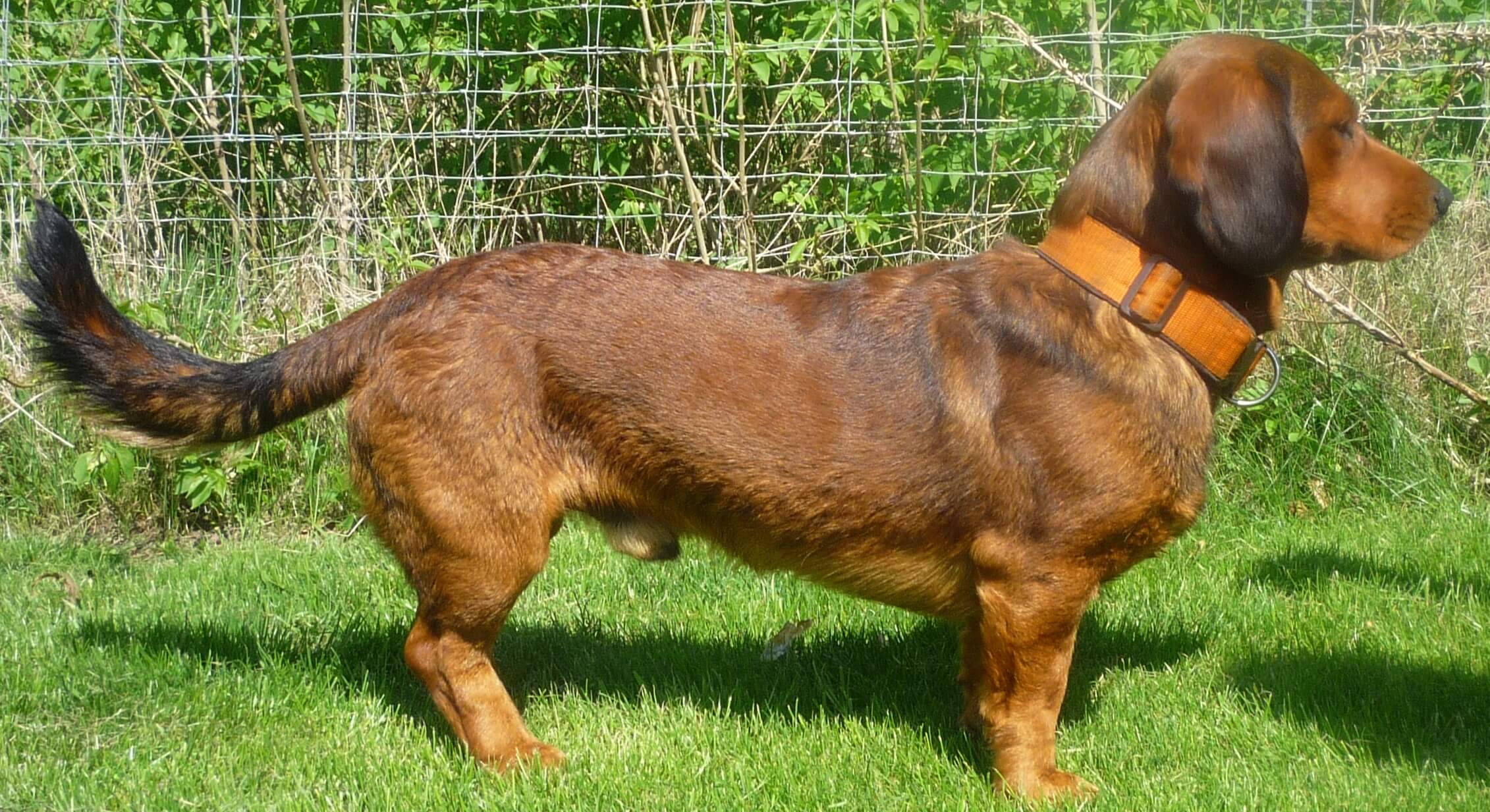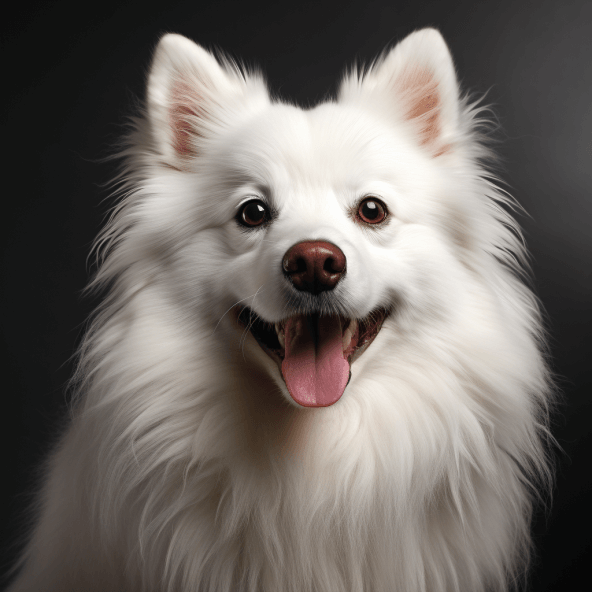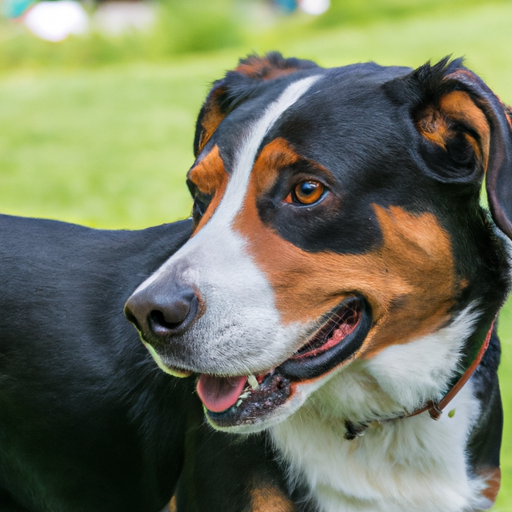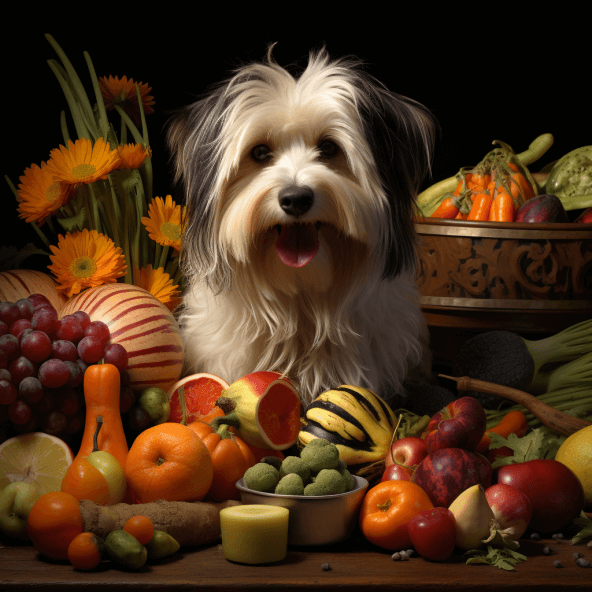Alpine Dachsbracke
Have you ever heard of the Alpine Dachsbracke? Many haven’t, but it’s high time you get acquainted! This engaging article you’re about to read is brimming with comprehensive information that paints a vivid picture of this unique dog breed. From their quirky personality traits to their valiant history in the misty mountains of Austria, the Alpine Dachsbracke is anything but ordinary. As you advance in the article, prepare yourself to be charmed and amused by tales about this short-legged, long-bodied hound, and get ready to discover why the Alpine Dachsbracke might just be the distinctive dog breed you’ve been searching for.
History of the Alpine Dachsbracke
The Alpine Dachsbracke has a rich heritage, with plenty of intriguing tales to impress any canine enthusiast.
Origins of the breed
Historically, the breed’s roots can be traced back to the Austrian Alps, where they were initially bred as hunting dogs. This compact, yet power-packed hound has been around since the 19th century and was valued for its ability to hunt down game in rugged terrains. Back in the day, they were popular among hunters needing a dog for steep mountain conditions, with the Alpine Dachsbracke mastering the art of trailing wild animals like foxes and hares.
Role in European hunting traditions
The Alpine Dachsbracke holds a special place in European hunting traditions. In the past, they were frequently used for tracking injured game over treacherously steep terrains. Royal families, including the House of Habsburg, were known admirers of this breed, employing them in hunting expeditions. Even today, these dogs are highly treasured within hunting circles for their stamina, sharp sense of smell and relentless determination.
Recognition by kennel clubs around the world
Despite its historical significance and hunting prowess, the Alpine Dachsbracke remained relatively unknown outside Austria until the late 20th Century. The breed was officially recognized by the World Canine Organization (FCI) in 1975, but it took more time for their recognition by other major kennel clubs around the globe. As of now, the Alpine Dachsbracke is acknowledged by various kennel clubs, including the United Kennel Club (UKC) but remains unrecognized by the American Kennel Club (AKC).
Physical Characteristics of the Alpine Dachsbracke
It’s interesting to note that despite their small size, the Alpine Dachsbracke are robustly built dogs.
Size, weight and proportions
As a small-sized breed, your typical Alpine Dachsbracke stands at about 13 to 15 inches tall at the shoulder and weighs in at around 33 to 40 pounds. They possess a sturdy body structure with relatively short legs, a long muscular body, and a wide chest, reflecting their strength and agility.
Coat texture and color
The Alpine Dachsbracke has a dense and thick double coat which is generally smooth to the slightly rough in texture. This double coat is their protection against harsh weather conditions in alpine terrains. Most commonly, their coat color can range from deep bright red to various shades of black with a touch of tan.
Typical facial features
With their dark brown or black round eyes full of intelligent expression, and a broad but well-proportioned muzzle, the face of an Alpine Dachsbracke is truly endearing. They have high set, floppy ears giving them an alert and eager look that is emblematic of their breed.

Personality and Temperament
For those who personally know them, Alpine Dachsbracke dogs are much more than their physical attributes – they are known for their alert and friendly temperament.
General disposition
Generally, Alpine Dachsbracke dogs are courageous, tenacious, and exude a keen sense of determination. They are also known for their stamina, making them perfect companions for long hiking adventures. Despite their inherent hunting instincts, they are incredibly affectionate and loyal to their humans.
Behavior around humans
They are known to be extremely amicable towards humans, including children, making them excellent family pets. They’ve got a friendly and gentle approach, and they tend to be attuned to their owner’s emotions. Of course, their highly alert character also makes them reliable watchdogs.
Behavior around other animals
Given their hunting background, Alpine Dachsbracke dogs may display a high prey drive around small animals. However, if raised with other pets from an early age and with appropriate training, they can coexist peacefully. Socializing your Dachsbracke from a young age can help introduce them safely to other animals.
Training the Alpine Dachsbracke
The Alpine Dachsbracke is best suited for owners who can invest time and effort into their training.
Training needs
Owing to their active and lively nature, Alpine Dachsbracke dogs should be mentally stimulated with sufficient training exercises. They have a natural inclination towards tracking and trailing, hence training techniques that incorporate these instincts can be beneficial. Early socialization is also crucial to nurture their interaction skills.
Effective training techniques
Alpine Dachsbracke thrive with positive reinforcement techniques. They typically respond well to praise, treats, and play as their rewards for learning. Patience and consistency are key, as these intelligent dogs require stimulating activities to keep them interested during a training session.
Common behavior problems and resolutions
Instances of stubbornness and independence can occasionally surface in an Alpine Dachsbracke, stemming from their strong hunting instincts. However, these instances can be effectively addressed by establishing a firm, yet kind hierarchy during training. Remember, harsh training tactics should never be used.
Exercise and Activity Needs
Being a spirited and lively breed, the Alpine Dachsbracke requires regular physical exertion to keep it healthy and content.
Daily exercise requirements
Alpine Dachsbracke should be provided with at least an hour’s worth of daily exercise. This could be in the form of long walks, hikes, playing fetch in the yard, or ensuring mentally stimulating activities.
Type of play and stimulation preferred by the breed
This breed particularly enjoys tracking and scent games, given their innate hunting instincts. They are also sporty dogs that would appreciate regular playtimes.
Issues due to lack of activity
In the absence of enough physical exercise, an Alpine Dachsbracke might develop behavioral issues such as excess barking, digging, or chewing. Maintaining a regular exercise regime is a sure shot way to keep these issues at bay.
Health and Lifespan
Like any other breed, Alpine Dachsbracke has its specific health concerns, which, if managed appropriately, can lead to a long and healthy life.
Average lifespan
The average lifespan of an Alpine Dachsbracke is around 12 to 15 years if well-cared for. This breed tends to enjoy a healthy lifespan, given its originally robust constitution.
Common health problems in the breed
While generally a hardy breed, the Alpine Dachsbracke are predisposed to certain health issues. Some of these issues include hip and elbow dysplasia, eye conditions like Progressive Retinal Atrophy (PRA), and obesity if their energetic exercise needs are not met.
Tips for promoting health and longevity
Regular visits to the vet, a healthy diet, and an active lifestyle can significantly contribute to your Alpine Dachsbracke’s overall health and longevity. Dental hygiene is particularly essential, as neglecting it might lead to other health complications later.
Grooming the Alpine Dachsbracke
This breed is relatively low maintenance in terms of grooming but requires some attention to keep it looking its best.
Coat maintenance needs
The Alpine Dachsbracke has a dense, short coat, which should be brushed at least once a week to keep it smooth and shiny. Regular brushing also helps reduce shedding and ensures the removal of dirt and minor tangles.
Bathing and nail trimming guidance
These dogs don’t require frequent baths. Monthly or bi-monthly bathing would be enough unless they get into something dirty or smelly. Also, their nails should be trimmed regularly to avoid overgrowth and any resulting discomfort.
Importance of dental care
Dental care is crucial for these dogs, and brushing their teeth a few times a week can help prevent gum diseases and bad breath. Regular dental checks should be a consistent part of their routine vet visits.
Diet and Feeding
Feeding your Alpine Dachsbracke a balanced diet is crucial to ensure they are receiving the necessary nutrients.
Typical diet needs
The Alpine Dachsbracke requires a high-quality dog food formulated for their size and energy level. This may include a mixture of dry kibble and canned food, but avoid overfeeding since they have a tendency to gain weight.
Special dietary considerations
These dogs, particularly puppies and seniors, may have specific dietary needs. Puppies should be fed more frequently with smaller portions while seniors may need a diet lower in calories but higher in fiber.
Feeding schedules for puppies, adults, and seniors
Puppies usually require three to four meals a day, while adult dogs do well with two meals a day. For senior dogs, feeding frequency depends on their health and lifestyle, but typically, two smaller meals a day work well.
Breeding and Puppies
Breeding Alpine Dachsbracke requires thorough knowledge and responsibility. It’s not simply about producing puppies.
Breeding considerations
Breeding these dogs should only be done with the goal of improving the breed. As a result, one should be mindful of genetic health conditions, temperament and breed standards. A responsible breeder will have all breeding dogs health tested to avoid passing on genetic health conditions.
Puppy care and development
Alpine Dachsbracke puppies are tiny, adorable copies of the adults. They grow fast and require plenty of care and attention. Puppies need to be wormed regularly, and vaccinations should start around six to eight weeks of age, with regular follow-ups.
Tips for selecting a responsible breeder
A responsible breeder prioritizes the health and temperament of their puppies above their sales. They are knowledgeable about the breed, transparent about health issues, and provide time to visit and choose a puppy. Remember to always ask for health certificates and pedigrees.
Adopting an Alpine Dachsbracke
Adopting an Alpine Dachsbracke can be an immensely satisfying and joyous experience.
Locating Alpine Dachsbracke rescues and breeders
Start by reaching out to local breed clubs or rescue organizations, both of which can provide resources to connect prospective owners with Alpine Dachsbracke available for adoption or sale.
Preparing your home for a new pet
Like any other breed, an Alpine Dachsbracke will need space – both outdoors and indoors. Make sure your yard is securely fenced and your house is prepared to accommodate this lively breed. Invest in a good quality crate, bed, toys, and grooming supplies.
Acclimating a new Alpine Dachsbracke to your home and family
Take your time in introducing your new Alpine Dachsbracke to its new home and family members. It’s important to provide a calm and reassuring environment and maintain a consistent routine to help your new pet adjust. Patience and understanding are key during this phase.
Whether you’re a seasoned pet parent or a first-timer, bringing an Alpine Dachsbracke into your life will surely add a delightful and engaging dimension to your household. With its striking looks, friendly temperament, and captivating history, this breed is guaranteed to steal your heart away.






